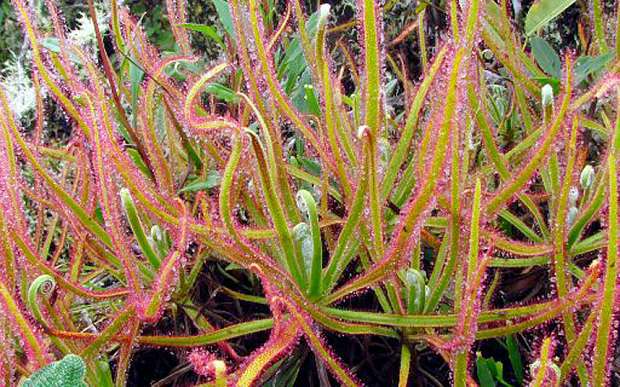A new plant species found on Facebook photos

An unknown plant species was discovered in Facebook photos. The investigation showed that this is a new type of carnivorous sundew, she was eventually given the name Drosera magnifica . The authors of the scientific work write that this is the largest sundew in nature. At least the largest in modern times (there used to be more). In addition to its size, Drosera magnifica is distinguished by a large number of leaves on each rosette and their width.
The discovery was made on a photograph of a plant lover who traveled on a mountain in southeastern Brazil, and then published it on Facebook .
“It was just another regular day on Facebook,” saysPaulo Gonella, doctoral student at the University of São Paulo in Brazil. A friend shared photos of plants in their natural habitat on a social network. Some of the sundews seemed unusual to Paulo, they were much larger and unlike other plants in Brazil. He showed the pictures to a colleague, and scientists decided to go to that mountain to collect samples and conduct research.

The goal was to confirm the size, number of sundews and potential threats to survival. You may need to save them, for this you need to get the appropriate status.
Most plants were located in one place on the southern slope of Pico do Padre Ângeloat an altitude of between 1,500 and 1,530 meters. Due to the shape of the mountains and the wind rose, this place was wetter than the surrounding area. Sundews grew on loose and sandy soil or even in sandstone cracks. Such soil cannot be called favorable.
Botanists studied the slopes of the two surrounding mountains nearby, but there were no traces of the new plant. I had to conclude that Drosera magnifica is clearly under threat of extinction due to the adverse habitat. She was given the name magnifica because of their “magnificent” appearance.

As a result, plants were given the status of “Critically Endangered”.
About the author of the discovery, Paolo Gonella was told that this is "one of a growing army of scientists who look at sites like Facebook [differently]." For scientists, usually social networks are not of particular interest. Paolo, on the contrary, believes that this is a useful tool. It helps keep in touch with nerds from around the world. By the way, he mentioned this idea even in his scientific work.
